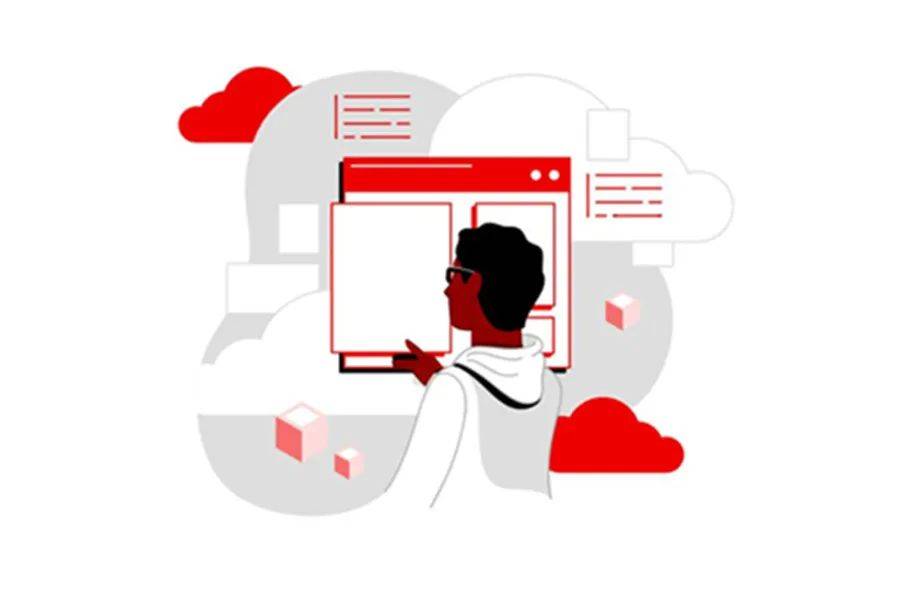 Technology peripherals
Technology peripherals
 AI
AI
 Red Hat Global Summit: Generative AI is exciting, and the open source field is facing good times
Red Hat Global Summit: Generative AI is exciting, and the open source field is facing good times
Red Hat Global Summit: Generative AI is exciting, and the open source field is facing good times
As an annual industry feast in the global open source field, the 2023 Red Hat Global Summit has arrived recently as scheduled.

Red Hat brings a global open source feast
At this summit, Red Hat released a series of new products such as the latest version of OpenShift AI and Ansible Lightspeed equipped with IBM Watson Code Assistant, and shared Red Hat’s views and opinions on the hot topics that media reporters are most concerned about.
Matt Hicks, president and CEO of Red Hat, said: "We are excited and looking forward to the future, especially in artificial intelligence and new technologies. We have announced some exciting new products, including OpenShift AI. However, to To achieve this vision, we also need to focus on efficiency, freeing ourselves the time and resources to invest. Therefore, the balance between developer operations and security efforts is critical."
“It’s almost impossible not to talk about artificial intelligence in meetings or conversations these days because it’s so ubiquitous. I couldn’t agree more. However, I want to emphasize automation. We heard from our customers about the importance of automation in this day and age. important role. We have made a significant investment in Ansible, the most popular open source automation community. To meet the needs of our customers, we launched the highly anticipated version 8 of Ansible. I am very excited about this and we are committed to To bring more value to users and customers through efficient automation, leveraging upstream and open source technologies," said Ashesh Badami, chief product officer at Red Hat.
Chris Wright, chief technology officer at Red Hat, said: "I'm particularly excited that I can see the summit resonating with our audience. We spent time focusing on developers and thinking about how to enable enterprises to operate with limited resources. Do more under this background. In this context, developer efficiency is crucial. We have done a lot of work in the backend community and established a development platform that can help enterprise developers access their development models, and we Committed to simplifying the connection process of distributed applications. Again emphasizing developer efficiency. As someone with an engineering background, I really enjoy the feedback I received today."

5G popularization promotes multi-cloud development
With the increasing popularity of 5G around the world, the Internet of Things, cloud computing and edge computing have also ushered in large-scale development opportunities.
Matt Hicks pointed out that Red Hat places the highest priority on the development of 5G, especially the impact on wireless access networks. “We are already seeing progress with RHEL being adopted on embedded devices and OpenShift being able to run efficiently on a single node. These efforts are based on the needs of telecom topologies and we work closely with strong partners and equipment vendors to We have built a series of core network infrastructure. We are full of expectations for the global popularization of 5G and believe that it will become the next important trend in the telecommunications industry."

【Red Hat President and CEO Matt Hicks】
Chris Wright pointed out that the birth of 5G is a major change in the network field. By providing higher bandwidth, lower latency, and more connection density, 5G will bring a lot of innovation to enterprise application scenarios. "Future 5G revenue growth is expected to come primarily from enterprise applications rather than the consumer market. Enterprise applications need to focus on applications that meet enterprise needs, and Red Hat has a large partner ecosystem that can provide applications designed specifically for enterprises. Applications. Through multi-access edge computing and OpenShift container platform, Red Hat can run network applications and enterprise-oriented applications, and even provide consumers with innovative application experiences in scenarios such as sports venues. This helps operators Gain a return on the huge investment required to build 5G networks. We see this as a manifestation of hybridization, building a smarter, more connected world by connecting data centers, edges and public clouds and leveraging IoT devices, Including smart cities and smart agriculture, this means huge changes and opportunities for Red Hat and companies in many industries."
Vehicle operating system and container
As we all know, Red Hat and General Motors have been collaborating on the development of in-vehicle operating systems. What progress have the two sides made so far? What role will containers play in the smart car industry in the future?
Chris Wright pointed out that smart cars can be connected to the network and are themselves very complex devices. Some people describe it as a "mobile data center." Red Hat's partnership with General Motors focuses on getting Red Hat's flagship enterprise Linux product into cars, which requires some technical work to ensure it is paired with the right hardware. Under this hardware architecture, many vehicles use processors based on ARM architecture and need to adapt to the size and space constraints of the vehicle. So far, Red Hat has made a lot of progress in this regard.
Also consider that the application of RHEL in vehicles can provide an underlying platform for entertainment systems, advertising systems, assisted driving and autonomous driving systems, and these systems have different levels of functional safety requirements. Therefore, introducing functional safety into traditional Linux distributions (such as RHEL) is a very important task. To this end, Red Hat is advancing technology that provides functional safety, an essential requirement for any in-vehicle solution.
Talking about how to run containers in vehicles or natively support containerization technology, Chris Wright revealed that Red Hat directly adopted Podman in the vehicle operating system (ROW) and also made two important improvements in OpenShift . One is to start with the wireless access network use case in the telecommunications field and streamline OpenShift into a version that can run on a single node and a single server (Red Hat calls it single-node OpenShift). These servers are usually of standard scale, and more Core and memory; secondly, Red Hat also launched MicroShift, which further reduces the footprint based on OpenShift and can run on smaller devices. It is a very important step to gradually transform RHEL into a form suitable for vehicle operating systems and be able to run containers.
"There is a huge ecosystem in the automotive industry, including numerous suppliers that provide products to OEMs. So we work with this huge ecosystem to ensure that the products we mention, whatever they are, operate in compliance Systems, edge-optimized Linux, or edge-optimized OpenShift and MicroShift, must be able to seamlessly integrate with the entire automotive ecosystem and meet the needs of the entire ecosystem." Ashesh Badami added.

【Red Hat Chief Product Officer Ashesh Badami】
The future of generative AI is exciting
The global popularity of generative AI in 2023 has made artificial intelligence and AIGC an unavoidable focus topic in every technology event, and the 2023 Red Hat Global Summit is no exception.
Matt Hicks said that the most exciting thing about generative AI is that it stands out from traditional deep learning capabilities and realizes the evolution of machine learning. Compared with traditional AI applications, the biggest change in generative AI is that it no longer requires users to label data for training. Instead, it can gradually train data on large models and some specialized models. “Going forward, we’re going to see a lot of open source-based innovation. We want to make sure we position ourselves well to take these innovations into the enterprise. In terms of leveraging generative AI and applying it to our own products, we’re already Practiced in some Red Hat products (such as Red Hat Insights). Generative AI will allow us to conduct more experiments and data training in a more efficient way, resulting in richer applications, and will also be used in the future. Do it in a faster, more exciting way."
Chris Wright believes that generative AI is a very important progress. Since the advent of deep learning, the development of large-scale language models and generative AI has attracted much attention. Over the past few years, deep learning has required data scientists to have deep expertise to build models. However, today transfer learning based on large language models and basic models provides more opportunities for enterprises. Users no longer need to perform the arduous work of labeling data, but can leverage smaller, more focused data sets for training and customization for wider application in enterprise environments. This change has dramatically altered access to technology, resulting in major transformations.
"In an enterprise environment, we cannot rely solely on models like ChatGPT or BART to ask and answer questions, because their answers, although complete in form, are not always accurate. So we focus on integrating these technologies into our platform. The first example we talked about today is the Ansible Playbook developed by Red Hat in partnership with IBM. Ansible Playbook can use natural language to generate executable operation guidance, and we have also expanded this technology into our product portfolio, Especially on the OpenShift platform. Taking Kubernetes as an example, when you start an application, you can use a YAML file to describe its deployment. Generating YAML files to deploy applications is a further expansion of our product portfolio. We attach great importance to OpenShift Runtime operations of applications running on the platform, so we use operators (Operators) to manage applications. In the future, we will further utilize generative AI technology to generate operators to help operation and maintenance personnel and developers work more efficiently Leveraging our product portfolio. This is just one of the many ways generative AI is integrated into our product portfolio, and we will continue to explore more possibilities in the future." Chris Wright said.

【Red Hat Chief Technology Officer Chris Wright】
“We are in an exciting time where innovative applications are critical regardless of the environment. Whether customers are innovating naturally or consciously emerging from economic challenges, we are seeing a lot of excitement surrounding open source. innovation, and we love to be that bridge. So going forward we're going to be focused on realizing the potential of this technology, whether it's by working with us to use AI in specific areas to enhance your capabilities in Ansible, or as a developer and Better performance in DevOps, or success in implementing some artificial intelligence innovations. This is a very exciting time. So we will fully apply these technologies in different industries and different application scenarios, and we will customers to spend this time together. Now is a good time for Red Hat and the open source space." Matt Hicks said.
The above is the detailed content of Red Hat Global Summit: Generative AI is exciting, and the open source field is facing good times. For more information, please follow other related articles on the PHP Chinese website!

Hot AI Tools

Undresser.AI Undress
AI-powered app for creating realistic nude photos

AI Clothes Remover
Online AI tool for removing clothes from photos.

Undress AI Tool
Undress images for free

Clothoff.io
AI clothes remover

Video Face Swap
Swap faces in any video effortlessly with our completely free AI face swap tool!

Hot Article

Hot Tools

Notepad++7.3.1
Easy-to-use and free code editor

SublimeText3 Chinese version
Chinese version, very easy to use

Zend Studio 13.0.1
Powerful PHP integrated development environment

Dreamweaver CS6
Visual web development tools

SublimeText3 Mac version
God-level code editing software (SublimeText3)

Hot Topics
 1664
1664
 14
14
 1423
1423
 52
52
 1321
1321
 25
25
 1269
1269
 29
29
 1249
1249
 24
24
 Using Task Manager in Linux
Aug 15, 2024 am 07:30 AM
Using Task Manager in Linux
Aug 15, 2024 am 07:30 AM
There are many questions that Linux beginners often ask, "Does Linux have a Task Manager?", "How to open the Task Manager on Linux?" Users from Windows know that the Task Manager is very useful. You can open the Task Manager by pressing Ctrl+Alt+Del in Windows. This task manager shows you all the running processes and the memory they consume, and you can select and kill a process from the task manager program. When you first use Linux, you will also look for something that is equivalent to a task manager in Linux. A Linux expert prefers to use the command line to find processes, memory consumption, etc., but you don't have to
 Solve the problem of garbled display of graphs and charts on Zabbix Chinese monitoring server
Jul 31, 2024 pm 02:10 PM
Solve the problem of garbled display of graphs and charts on Zabbix Chinese monitoring server
Jul 31, 2024 pm 02:10 PM
Zabbix's support for Chinese is not very good, but sometimes we still choose Chinese for management purposes. In the web interface monitored by Zabbix, the Chinese under the graphic icon will display small squares. This is incorrect and requires downloading fonts. For example, "Microsoft Yahei", "Microsoft Yahei.ttf" is named "msyh.ttf", upload the downloaded font to /zabbix/fonts/fonts and modify the two characters in the /zabbix/include/defines.inc.php file at define('ZBX_GRAPH_FONT_NAME','DejaVuSans');define('ZBX_FONT_NAME'
 7 ways to help you check the registration date of Linux users
Aug 24, 2024 am 07:31 AM
7 ways to help you check the registration date of Linux users
Aug 24, 2024 am 07:31 AM
Did you know, how to check the creation date of an account on a Linux system? If you know, what can you do? Did you succeed? If yes, how to do it? Basically Linux systems don't track this information, so what are the alternative ways to get this information? You may ask why am I checking this? Yes, there are situations where you may need to review this information and it will be helpful to you at that time. You can use the following 7 methods to verify. Use /var/log/secure Use aureport tool Use .bash_logout Use chage command Use useradd command Use passwd command Use last command Method 1: Use /var/l
 What should I do if the WPS missing fonts under the Linux system causes the file to be garbled?
Jul 31, 2024 am 12:41 AM
What should I do if the WPS missing fonts under the Linux system causes the file to be garbled?
Jul 31, 2024 am 12:41 AM
1. Find the fonts wingdings, wingdings2, wingdings3, Webdings, and MTExtra from the Internet. 2. Enter the main folder, press Ctrl+h (show hidden files), and check if there is a .fonts folder. If not, create one. 3. Copy the downloaded fonts such as wingdings, wingdings2, wingdings3, Webdings, and MTExtra to the .fonts folder in the main folder. Then start wps to see if there is still a "System missing font..." reminder dialog box. If not, just Success! Notes: wingdings, wingdin
 Teach you how to add fonts to Fedora in 5 minutes
Jul 23, 2024 am 09:45 AM
Teach you how to add fonts to Fedora in 5 minutes
Jul 23, 2024 am 09:45 AM
System-wide installation If you install a font system-wide, it will be available to all users. The best way to do this is to use RPM packages from the official software repositories. Before starting, open the "Software" tool in Fedora Workstation, or other tools using the official repository. Select the "Add-ons" category in the selection bar. Then select "Fonts" within the category. You'll see the available fonts similar to the ones in the screenshot below: When you select a font, some details will appear. Depending on several scenarios, you may be able to preview some sample text for the font. Click the "Install" button to add it to your system. Depending on system speed and network bandwidth, this process may take some time to complete
 Centos 7 installation and configuration NTP network time synchronization server
Aug 05, 2024 pm 10:35 PM
Centos 7 installation and configuration NTP network time synchronization server
Aug 05, 2024 pm 10:35 PM
Experimental environment: OS: LinuxCentos7.4x86_641. View the current server time zone & list the time zone and set the time zone (if it is already the correct time zone, please skip it): #timedatectl#timedatectllist-timezones#timedatectlset-timezoneAsia/Shanghai2. Understanding of time zone concepts: GMT, UTC, CST, DSTUTC: The entire earth is divided into twenty-four time zones. Each time zone has its own local time. In international radio communication situations, for the sake of unification, a unified time is used, called Universal Coordinated Time (UTC). :UniversalTim
 How to connect two Ubuntu hosts to the Internet using one network cable
Aug 07, 2024 pm 01:39 PM
How to connect two Ubuntu hosts to the Internet using one network cable
Aug 07, 2024 pm 01:39 PM
How to use one network cable to connect two ubuntu hosts to the Internet 1. Prepare host A: ubuntu16.04 and host B: ubuntu16.042. Host A has two network cards, one is connected to the external network and the other is connected to host B. Use the iwconfig command to view all network cards on the host. As shown above, the network cards on the author's A host (laptop) are: wlp2s0: This is a wireless network card. enp1s0: Wired network card, the network card connected to host B. The rest has nothing to do with us, no need to care. 3. Configure the static IP of A. Edit the file #vim/etc/network/interfaces to configure a static IP address for interface enp1s0, as shown below (where #==========
 toss! Running DOS on Raspberry Pi
Jul 19, 2024 pm 05:23 PM
toss! Running DOS on Raspberry Pi
Jul 19, 2024 pm 05:23 PM
Different CPU architectures mean that running DOS on the Raspberry Pi is not easy, but it is not much trouble. FreeDOS may be familiar to everyone. It is a complete, free and well-compatible operating system for DOS. It can run some older DOS games or commercial software, and can also develop embedded applications. As long as the program can run on MS-DOS, it can run on FreeDOS. As the initiator and project coordinator of FreeDOS, many users will ask me questions as an insider. The question I get asked most often is: "Can FreeDOS run on a Raspberry Pi?" This question is not surprising. After all, Linux runs very well on the Raspberry Pi



